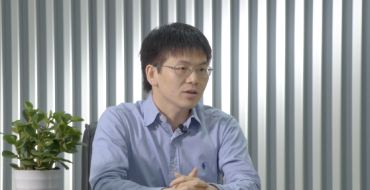报告题目:金属玻璃纳米管的制造与性质分析(Metallic Glass Nanotube Arrays: Preparation and Surface Characterizations)
报告人:陈建光教授(台湾科技大学)
邀请人:王林格 教授
时间:2018年1月9日(星期二)上午10:00
地点:材料科学与工程学院25号楼331室
报告摘要:
In this study, we fabricated first-ever metallic glass nanotubes (MGNTs) in a distinct pattern on a Si substrate, by sputter-depositing a coating of metallic glass (Zr55Cu30Al10Ni5) over a contact-hole array template created in photoresist. The resulting nanotubes were 500 or 750 nm in height with a diameter of 500 or 750 nm and wall thickness ranging from 44 nm to 103 nm. The structure of the nanotubes was preserved by the high strength and ductility of the metallic glass during the removal of the photoresist template under ultrasonic vibration. We observed an increase in the hydrophobicity of the MGNT with an increase in the thickness of the walls, with the thickest walls presenting an apparent contact angle of 139°. The hydrophobicity is due to air trapped within the tubes, which prevents the intrusion of water into the nanostructures. We also observed thermal-response behavior on the surface of the MGNT array. Surface cooling produced negative pressure within the nanochambers, which created a sucking force against the water droplets. Surface heating produced positive pressure within the nanochambers, which actually lifted the droplets. This thermal-response behavior was shown to be reversible for at least five cycles between 25 and 55 °C. The MGNT created adhesion forces reaching 14.2 N cm-2, which was sufficient to secure the water droplets even when the surface was tilted or completely inverted. The MGNT array in this study represents a biomimetic analogue with switchable contact interface, the behavior of which can be controlled simply by altering the surface temperature.
报告人简介:
陈建光教授分别于1996年、1999年从台湾清华大学获得学士、硕士学位,之后于2004年从台湾交通大学获得博士学位。2004-2005年他在日本东北大学流体科学研究所从事博士研究员工作,2005-2006年他在屏东科技大学生物系统工程系担任助理教授。之后加入台湾科技大学并工作至今,2010年任台湾科技大学高分子工程系副教授,2013年任材料科学与工程系教授。陈教授的研究兴趣主要集中在生物流体晶片、高分子刷合成、半导体制作和高分子复合材料等方面。其研究成果已发表近100篇科研论文。












